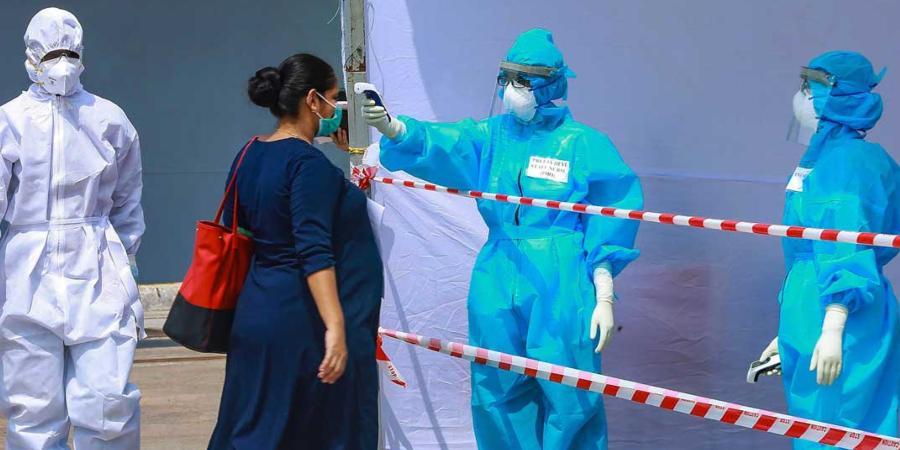
Kerala’s COVID puzzle: Despite high rate of positivity, experts not overly worried
The rate of hospitalisation is steadily coming down. In April, 100 out of 1,000 people who tested positive were hospitalised. Now it is only 25, says one expert

Kerala’s COVID infection prevalence is consistently high while the rest of the country has shown a declining trend. As of August 19, the test positivity rate (TPR – the ratio of positives to total persons tested) shows a rising trend at 16.15 with 21,116 new cases. The TPR was 15.5 and 15.48, respectively, on August 18 and 17.
Malappuram district has the highest TPR of 20.25. The R-value recorded in the state stands at 0.94, according to Dr Aneesh, a member of the expert committee on COVID. Reproduction or reproductive number, known as the R-value of COVID, has become a closely followed measurement across the world and in India.
It is a scientific concept: the average number of new infections generated by one infected individual during the entire infectious period. One infected person is able to spread the SARS-CoV-2 infection to over 200 persons, but the R factor is the real number of how many people are being infected from one affected person.
For example, India’s R-value, according to the health ministry data published in the first week of August, was 1.2. This means 100 infected people in India are infecting around 120 people. The value is dynamic. It reflects changes every week.
Also read: Northeast is the cancer capital of India, says study
Despite a high rate of test positivity, experts are not overly worried. “The rate of hospitalisation is steadily coming down. In April, 100 out of 1,000 people who tested positive were hospitalised. Now it is only 25,” says Dr Aneesh, who is also associate professor at Thiruvananthapuram Medical College.
As of August 19, 1.84 crore people – 51. 97 per cent of Kerala’s total population – has received at least one dose. “We identify one out of six cases. The national average is one in 30,” says Dr Aneesh.
However, a post-Onam surge is expected, which would again make things worse in the state. “We have reasons to worry. If the number of daily cases rises again to 40-50,000, we will again be in a crisis,” says Dr Aneesh. The vaccination drive will not be impacted by the Onam holidays, as announced by the chief minister.
The number of tests has fallen compared to the previous two weeks. “This is one reason for TPR going high. We have been conducting nearly two lakh tests a day. This has come down in the last few days,” says Dr Padmanabha Shenoy. According to him, this is an indication that Kerala should not slacken in conducting tests. “We have to enhance testing, especially after Onam.”
Also read: Bengaluru: COVID cases among children rise as schools set to reopen
Kerala celebrates Onam on August 21. Onam is not a single-day celebration; it’s a seasonal festival that begins nine days prior to the day of Thiruvonam. As the lockdown rules are relaxed and shops are open, streets across the state are crowded. Though lockdowns are announced based on the IPR (Infection Population Ratio) in local bodies on an everyday basis by the respective district collectors, a strict implementation is relatively absent.
Experts say there is nothing unusual about Malappuram district having the largest number of cases. “There are many factors. Malappuram has the highest population in the state. The unvaccinated population is also high there compared to other districts because the population of younger people is high,” says Dr KP Aravindan.
According to Dr Shimna Azees, a native of Malappuram who works at the COVID ward in Manchery Medical College, the structure of families is also different in Malappuram. “Compared to other districts, a large number of people live in joint families, a factor that makes the infection travel faster and wider,” says Dr Shimna.
According to the District Collector, Wayanad district has achieved 100 per cent vaccination for the targeted adult population. As of August 16, 6,16,112 people have been given the first dose. The collector says this does not include those who refused to take vaccination, those who tested positive and those who are in quarantine. However, the test positivity rate does not show a declining trend. The TPR stood at 20.35 on August 19. A week ago, on August 13, the TPR was recorded at 16.49 for Wayanad.
According to state Health Minister Veena George, Kerala is being prepared to handle the third wave. “New paediatric wards with oxygen supply are being set up in 48 hospitals. This will be completed in three months. An additional number of 744 beds will be ready by October,” says George.


